Find The Best Metal Roof Repair Contractors With Roofyng.co.uk
Expert Metal Roof Repair Services - Fast & Reliable
Roofyng.co.uk connects you with vetted metal roof repair contractors across UK. Request free quotes, compare services, and find the perfect match for your needs.
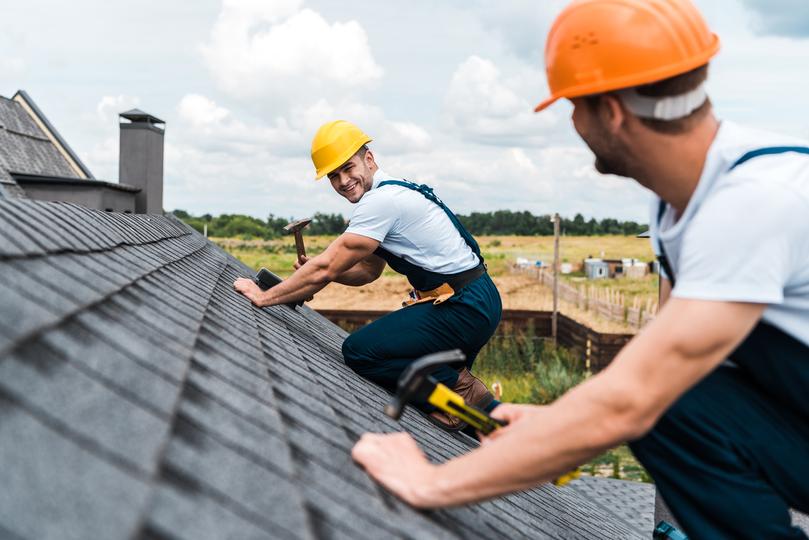
Metal Roof Repair Contractors Near Me
Looking for metal roof repair contractors in a specific location? Browse our directory to find roofing companies near you across UK.
Finding The Right Metal Roof Repair Contractor Is Easy With Roofyng.co.uk
We make it simple to connect with vetted metal roof repair professionals across the UK.

- Tell Us About Your Metal Roof Repair Needs
- Describe the issue with your metal roof, including the type of metal (steel, aluminum, copper), the damage, and the location on your roof.
- We Connect You With Local Contractors
- We'll match you with qualified metal roof repair contractors who serve your area and have experience working with the type of metal roof you have.
- Compare Quotes & Choose The Best Fit
- Review quotes, compare services, and choose the metal roof repair contractor who best meets your requirements and budget. We provide you with contractor profiles, ratings, and reviews to help you make the best choice.
- Get Your Metal Roof Repaired!
- With the right contractor, you can have your metal roof repaired efficiently and effectively, ensuring long-lasting protection for your property.
Why Choose Roofyng.co.uk for Your Metal Roof Repairs?
The smarter way to find Steel Roof Repairs contractors
Finding a reliable and experienced metal roof repair contractor is crucial for ensuring the longevity and performance of your roof. Roofyng.co.uk simplifies this process, offering a seamless and efficient way to connect with qualified professionals in the UK. Here's why we stand out as the preferred choice for metal roof repairs: We take the stress out of finding the right roofing services. Here's how:

- Specialized Expertise
- Metal roofs require specialized knowledge and skills for proper repairs. Roofyng.co.uk features a network of contractors with proven expertise in metal roofing systems. They understand the unique challenges and techniques involved in repairing different types of metal roofs, ensuring that your repairs are carried out correctly and effectively.
- Vetted and Reliable Contractors
- We thoroughly vet all metal roof repair contractors listed on our platform. We verify their licensing, insurance, and experience to ensure they meet our stringent quality and reliability standards. You can have confidence knowing you're engaging with trustworthy professionals.
- Competitive Quotes
- Roofyng.co.uk allows you to receive competitive quotes from multiple metal roof repair contractors in your area. You can easily compare pricing, services, and expertise, enabling you to make informed decisions that align with your budget and specific repair needs.
- Time and Cost Savings
- We save you time and effort by streamlining the contractor search process. No more endless searching or sifting through unreliable listings. Our platform connects you directly with qualified professionals, allowing you to focus on getting your metal roof repaired promptly and efficiently.
- All Metal Roof Types Repaired
- Our listed contractors have experience repairing all types of metal roofs, including standing seam, corrugated, metal shingle, copper, aluminum, and steel. Regardless of your metal roofing type, we can connect you with specialists equipped to handle your specific repair needs.
- Excellent Customer Support
- Our dedicated customer support team is available to assist you at every step, answering your questions and ensuring a smooth experience. We're committed to your satisfaction.
Need Metal Roof Repairs for Your Business?
Find Commercial Metal Roof Repair Contractors
Roofyng.co.uk features a network of qualified commercial metal roof repair contractors experienced in handling repairs for various commercial buildings, including offices, retail spaces, warehouses, and industrial facilities. We can connect you with professionals who understand the specific requirements and challenges of commercial metal roofing.
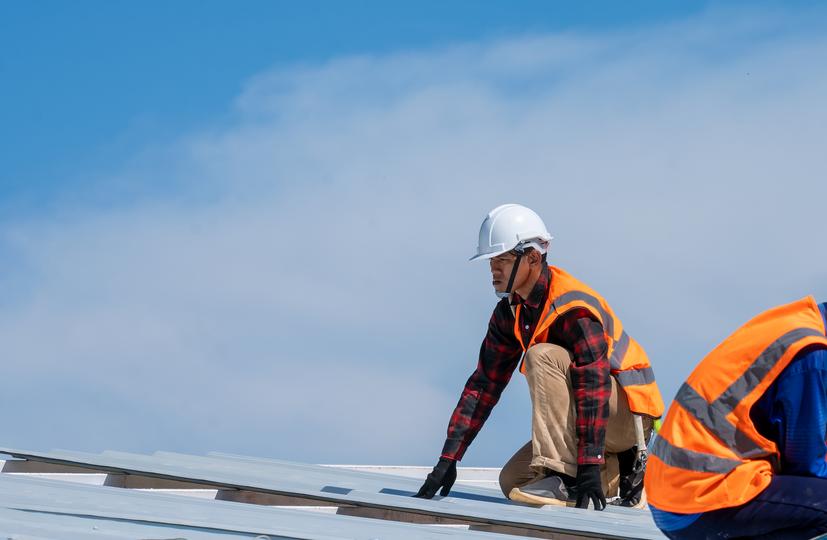
Find trusted roofing companies near you. Get multiple quotes for roof installation, repair, and replacement services.
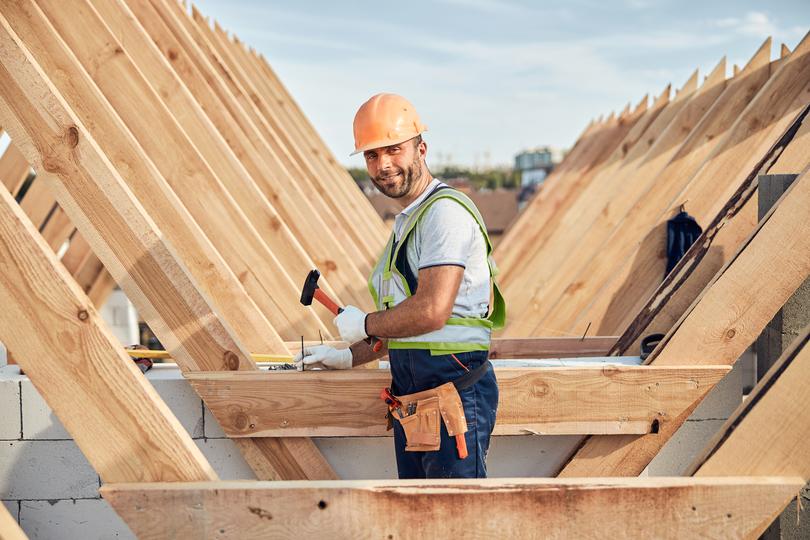
Get a new roof installed by experienced professionals. We offer a variety of roofing materials and styles to suit your needs and budget.
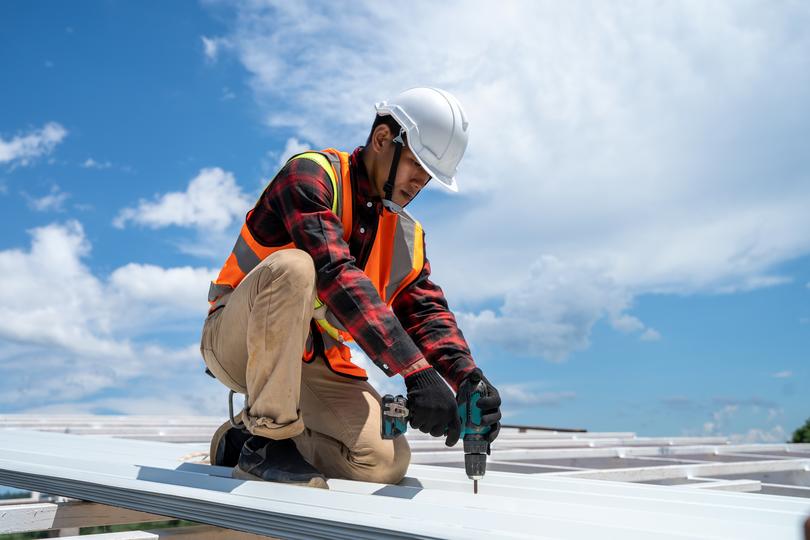
Comprehensive roof repair services for all types of roofs. We fix leaks, damage, and other roofing issues to keep your property protected.
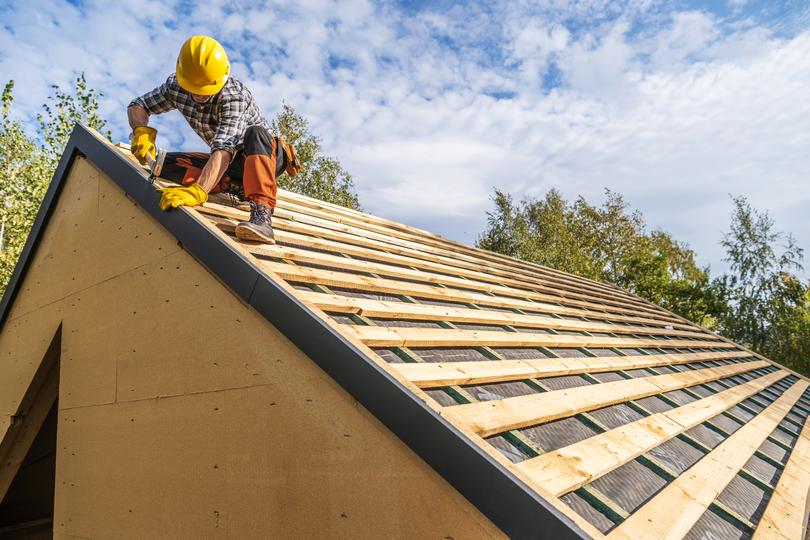
Complete roof replacement services for residential and commercial buildings. We remove your old roof and install a new roof with the material of your choice.
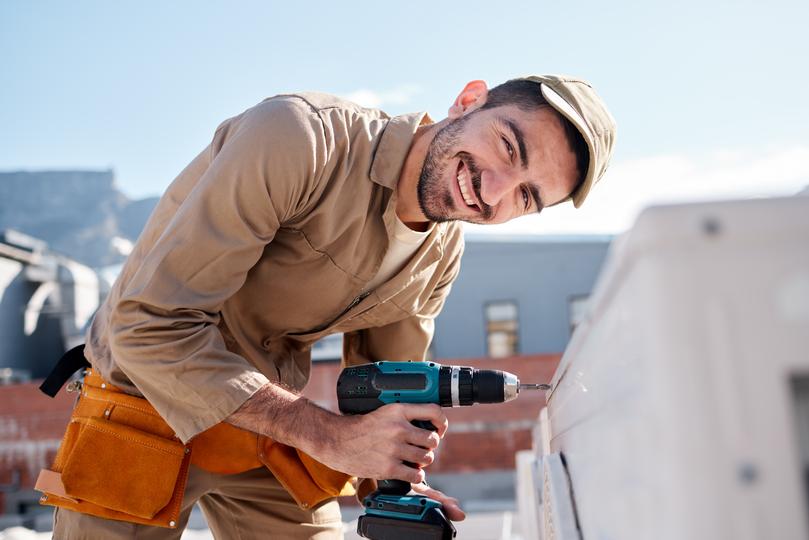
Specialized roofing services for commercial buildings. We handle installation, repair, and replacement for all types of commercial roofs.
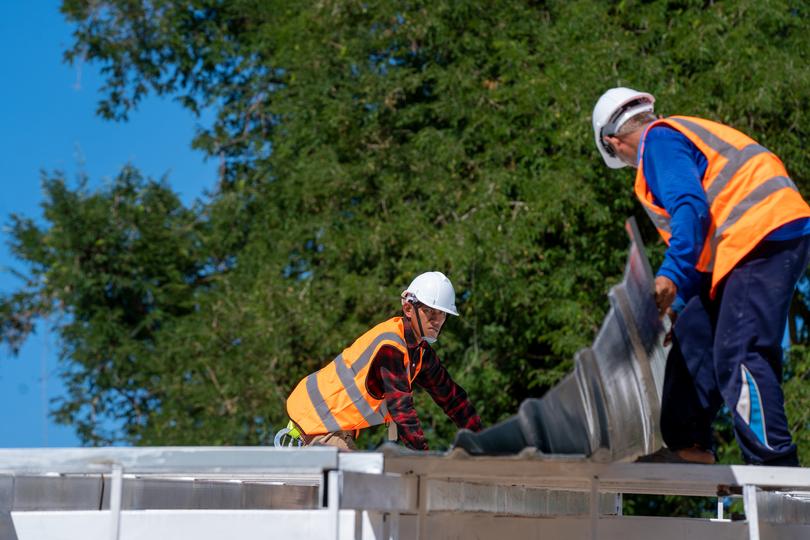
24/7 emergency roof repair services for urgent situations. We respond quickly to storm damage, leaks, and other roofing emergencies to protect your property.
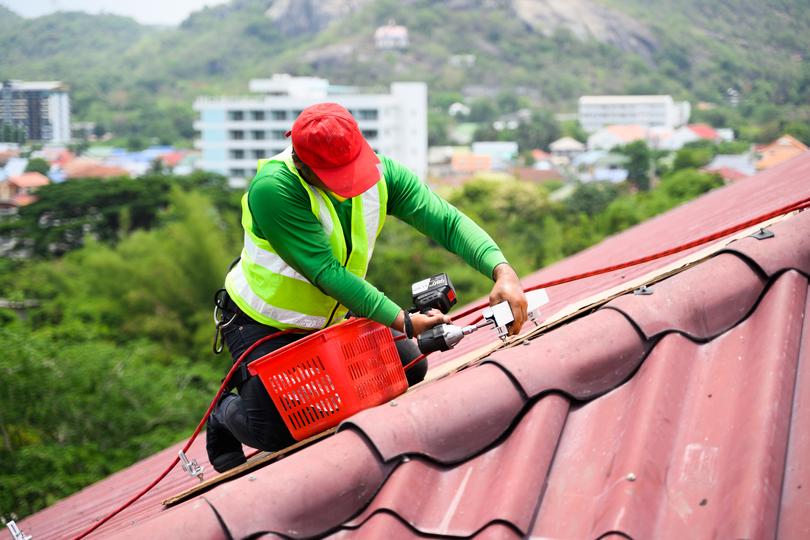
Fast and reliable roof leak repair services. We identify and fix the source of leaks to protect your property from water damage.

Durable and stylish steel roof installation services. We offer a variety of metal roofing options, including standing seam and corrugated metal.

Expert flat roof installation and repair services. We work with a variety of flat roofing systems, including TPO, EPDM, and modified bitumen.

Sustainable and eco-friendly green roof installation and maintenance. We create beautiful living roofs that benefit the environment and your property.

Specialized roofing companies experienced in hail damage repair and replacement. We work with insurance companies to get your roof restored after a hailstorm.

Professional metal roof repair services for residential and commercial properties. We fix leaks, dents, rust, and other metal roof issues.

Certified roof inspectors provide thorough roof inspections for insurance claims, pre-purchase evaluations, and maintenance assessments.

Long-lasting and energy-efficient metal roof replacement services. We install durable steel or metal roofs that enhance your property's value and curb appeal.
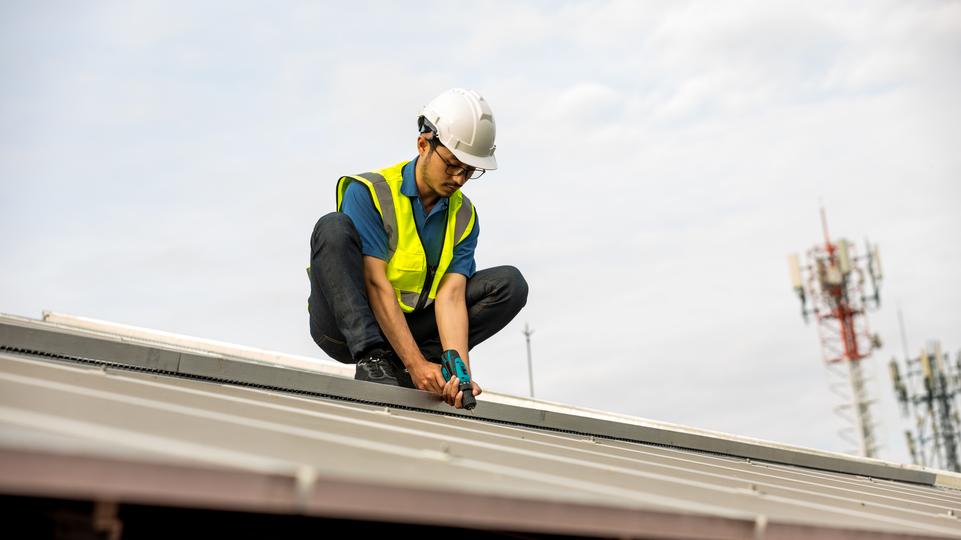
Professional roof flashing repair to prevent leaks and water damage. We repair and seal flashing around chimneys, skylights, vents, and other roof penetrations.
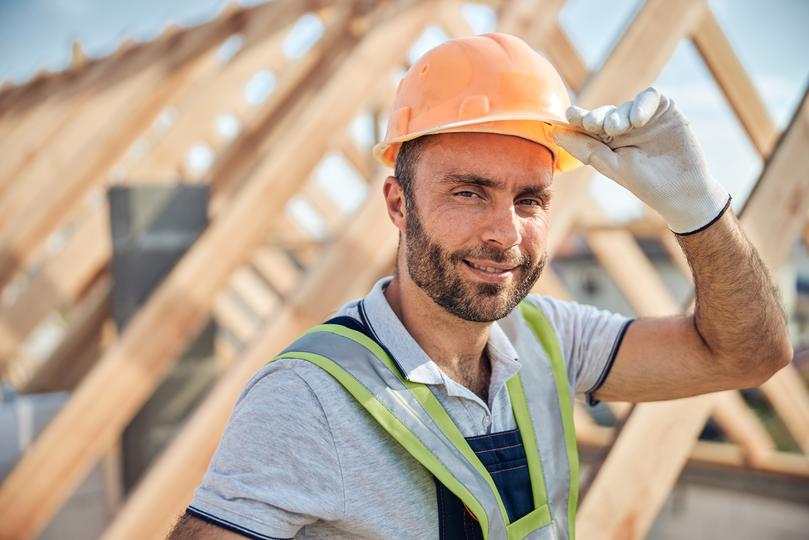
Professional roof waterproofing services to protect your property from leaks and water damage. We apply high-quality sealants, membranes, and coatings to ensure

Durable and long-lasting rubber roof (EPDM) installation and repair services. Ideal for flat or low-slope roofs on residential and commercial buildings.
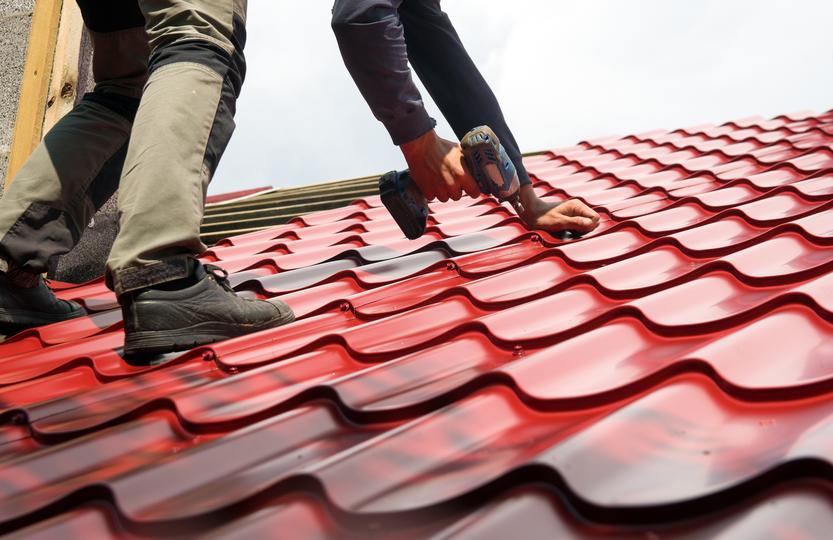
Expert TPO roofing services for flat and low-slope roofs. We offer high-quality TPO roof installation, repair, and maintenance for residential and commercial pro

Specialized roofing contractors for industrial facilities. We handle large-scale roof installations, repairs, and replacements for factories, warehouses, and oth

Reliable flat roof replacement services for residential and commercial properties. We specialize in installing durable and weather-resistant flat roofing systems

24/7 emergency roof tarping services to protect your property from further damage. We provide temporary roof covers after storms or other incidents.

Improve your home's energy efficiency and comfort with our roof insulation services. We install and replace attic insulation to reduce energy costs and keep your
Metal Roof Repairs for Your Home?
Find Residential Metal Roof Repair Contractors
Roofyng.co.uk connects homeowners with trusted residential metal roof repair contractors who can address all your home's metal roofing needs. We understand that a damaged roof can compromise your home's protection and value. Our vetted contractors are here to provide efficient and reliable repair solutions, ensuring your metal roof remains durable and aesthetically appealing.

Find trusted roofing companies near you. Get multiple quotes for roof installation, repair, and replacement services.

Get a new roof installed by experienced professionals. We offer a variety of roofing materials and styles to suit your needs and budget.

Comprehensive roof repair services for all types of roofs. We fix leaks, damage, and other roofing issues to keep your property protected.

Complete roof replacement services for residential and commercial buildings. We remove your old roof and install a new roof with the material of your choice.

Expert shingle roofers for your home. We specialize in asphalt shingle installation, repair, and replacement, offering a range of shingle types and colors.

24/7 emergency roof repair services for urgent situations. We respond quickly to storm damage, leaks, and other roofing emergencies to protect your property.

Fast and reliable roof leak repair services. We identify and fix the source of leaks to protect your property from water damage.

Expert tile roofing services for your home. We specialize in the installation, repair, and replacement of tile roofs, offering a variety of styles and colors.

Durable and stylish steel roof installation services. We offer a variety of metal roofing options, including standing seam and corrugated metal.

Expert shingle roof repair services for your home. We fix leaks, damaged or missing shingles, and other common shingle roofing problems.

Affordable and efficient shingle roof replacement services. We remove your old shingles and install a new, durable asphalt shingle roof.

Expert flat roof installation and repair services. We work with a variety of flat roofing systems, including TPO, EPDM, and modified bitumen.

Sustainable and eco-friendly green roof installation and maintenance. We create beautiful living roofs that benefit the environment and your property.

Specialized roofing companies experienced in hail damage repair and replacement. We work with insurance companies to get your roof restored after a hailstorm.

Professional metal roof repair services for residential and commercial properties. We fix leaks, dents, rust, and other metal roof issues.

Certified roof inspectors provide thorough roof inspections for insurance claims, pre-purchase evaluations, and maintenance assessments.

Long-lasting and energy-efficient metal roof replacement services. We install durable steel or metal roofs that enhance your property's value and curb appeal.

Professional roof flashing repair to prevent leaks and water damage. We repair and seal flashing around chimneys, skylights, vents, and other roof penetrations.

Professional roof waterproofing services to protect your property from leaks and water damage. We apply high-quality sealants, membranes, and coatings to ensure

Durable and long-lasting rubber roof (EPDM) installation and repair services. Ideal for flat or low-slope roofs on residential and commercial buildings.

Expert TPO roofing services for flat and low-slope roofs. We offer high-quality TPO roof installation, repair, and maintenance for residential and commercial pro

Specialized tile roof repair services. We fix leaks, replace cracked or broken tiles, and provide other tile roof maintenance to keep your roof in excellent cond

Beautiful and durable tile roof replacement services. We install high-quality clay or concrete tile roofs, offering a classic and elegant look for your home.

Reliable flat roof replacement services for residential and commercial properties. We specialize in installing durable and weather-resistant flat roofing systems

24/7 emergency roof tarping services to protect your property from further damage. We provide temporary roof covers after storms or other incidents.

Expert chimney flashing repair services to prevent leaks and water damage. We ensure your chimney is properly sealed to protect your home.

Improve your home's energy efficiency and comfort with our roof insulation services. We install and replace attic insulation to reduce energy costs and keep your
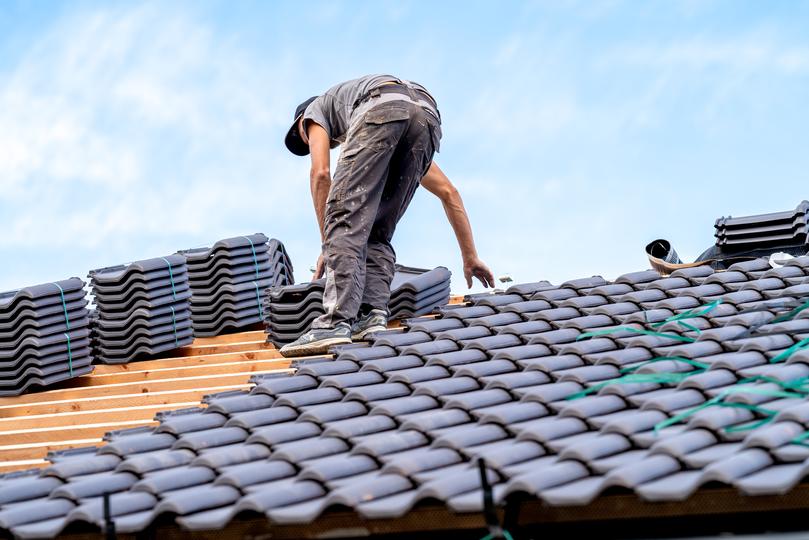
Beautiful and durable cedar shake roofing services. We specialize in cedar shake installation, repair, and replacement, providing a classic and elegant look for
Ready to Get Your Metal Roof Repaired?
Find The Best Metal Roof Repair Contractors on Roofyng.co.uk!
Request free quotes, compare services, and connect with experienced metal roof repair professionals in your area.
Metal Roof Repair Glossary
Standing Seam Metal Roof
Corrugated Metal Roof
Metal Shingles
Fasteners
Sealant
Panel
Lap
Clip
Rust
Galvanized Steel
Galvalume Steel
Aluminum
Copper
Roof Seam
Roof Penetration
Metal Roof Repair FAQs
How much does it cost to repair a metal roof in the UK?
How long does it take to repair a metal roof?
How do I know if my metal roof needs to be repaired or replaced?
- Leaks: Persistent leaks, especially around seams, flashing, or penetrations, are a clear indication of a problem.
- Rust or Corrosion: While metal roofs are generally resistant to rust, prolonged exposure to moisture or harsh weather conditions can lead to corrosion, requiring repairs or panel replacement.
- Fastener Issues: Loose, missing, or damaged fasteners can compromise the roof's integrity and lead to leaks.
- Dents or Damage: Dents, punctures, or other damage to the metal panels, often caused by hailstorms or falling debris, can affect the roof's structural integrity and waterproofing capabilities.
- Paint Fading or Chalking: If the paint on your metal roof is significantly faded or chalking, it may be losing its protective properties and require repainting or recoating.
What are the most common types of metal roof repairs?
- Leak Repair: Identifying and sealing leaks around seams, flashing, or penetrations.
- Fastener Replacement: Replacing loose, missing, or damaged fasteners to secure panels properly.
- Panel Replacement: Replacing damaged or corroded metal panels to restore structural integrity and waterproofing.
- Seam Repair: Repairing separated or damaged seams to ensure a watertight seal.
- Flashing Repair: Repairing or replacing damaged flashing around chimneys, vents, skylights, or other roof penetrations.
- Rust Treatment: Treating rust spots to prevent further corrosion and potential leaks.
- Paint or Coating Application: Applying a new coat of paint or a protective coating to restore the roof's appearance and protect it from the elements.
How do I find a qualified metal roof repair contractor?
Can I repair my metal roof myself?
How can I tell if my metal roof has leak?
- Water Stains: Visible water stains on ceilings or walls, especially after rainfall, are a strong indication of a roof leak.
- Dripping Water: If you notice water dripping from the ceiling, it's a clear sign of a leak.
- Dampness or Mold: Dampness, musty odors, or mold growth in your attic or ceiling areas can indicate a leak that has been present for some time.
- Rust or Corrosion: Rust or corrosion around fasteners, seams, or flashing can be a sign of water penetration and potential leaks.
- Visible Damage: Check for any visible damage to the metal panels, such as holes, dents, or gaps in seams, that could allow water to enter.
How do I fix a leak in a metal roof?
- Locate the Leak: Thoroughly inspect the roof to identify the exact location of the leak. This may involve checking seams, flashing, penetrations, and fasteners.
- Repair or Replace Damaged Materials: Depending on the leak's cause, the contractor may repair or replace damaged flashing, sealant, fasteners, or even entire panels.
- Seal Seams and Penetrations: Ensure a watertight seal around all seams, penetrations, and other vulnerable areas using appropriate sealants and flashing techniques.
- Test the Repair: After completing the repairs, the contractor will likely test the area to ensure it's watertight and no further leaks occur.
How can I prevent leaks in my metal roof?
- Regular Inspections: Inspect your roof at least twice a year, in spring and fall, and after any significant weather event, like a hailstorm or high winds. Look for any signs of damage, such as loose or missing fasteners, rust, or damaged panels.
- Clean Debris: Keep the roof surface clear of leaves, branches, and other debris that can accumulate in valleys and around penetrations, potentially obstructing water flow and causing leaks.
- Maintain Flashing: Inspect flashing around chimneys, vents, skylights, and other penetrations to ensure it's properly sealed and in good condition. Replace or repair damaged flashing as needed.
- Check Fasteners: Regularly check and tighten any loose fasteners. Replace missing or damaged fasteners promptly.
- Address Rust: Treat rust spots as soon as you notice them to prevent them from spreading and creating holes in the metal.
- Apply Protective Coating (if necessary): If your metal roof has a protective coating, consider reapplying it as needed to maintain its effectiveness in preventing rust and weathering.
How do I seal a seam on a metal roof?
- Sealant Tape: Applying a self-adhesive sealant tape over the seam, ensuring it fully covers the joint and adheres to both metal panels.
- Lap Sealant: Applying a liquid sealant, such as silicone or polyurethane, to the overlapping edges of the panels before joining them. The sealant fills the gap and creates a watertight seal.
- Standing Seam Clips: For standing seam metal roofs, specialized clips are used to secure the panels together without penetrating the metal surface. These clips are designed to allow for thermal expansion and contraction, preventing leaks caused by movement.
What is the best sealant for metal roof repairs?
- Silicone Sealant: Known for its flexibility, durability, and resistance to UV radiation. Suitable for sealing flashing, seams, and penetrations.
- Polyurethane Sealant: Offers excellent adhesion, strength, and moisture resistance. It expands as it cures, filling gaps and cracks effectively. Suitable for larger gaps, seams, and areas prone to movement.
- Butyl Tape: A thick, sticky tape that provides a strong and durable seal. Often used for sealing flashing, seams, and penetrations.
How can I prevent rust on my metal roof?
- Regular Inspections: Inspect your roof for scratches, chipped paint, or exposed metal. Address these issues promptly to prevent rust formation.
- Keep Roof Clean: Remove leaves, debris, and other materials that can trap moisture and promote rust.
- Promptly Address Leaks: Fix leaks immediately to prevent water from coming into contact with the metal and causing rust.
- Use Rust-Resistant Materials: Choose roofing materials with high corrosion resistance, such as galvanized steel, galvalume steel, aluminum, or copper.
- Apply Protective Coating: Consider applying a rust-inhibiting primer or a protective coating to the metal roof. These coatings create a barrier that prevents moisture and oxygen from reaching the metal surface, inhibiting rust formation.
Can I paint a metal roof?
How do I prepare a metal roof for painting?
- Cleaning: Thoroughly clean the roof surface using a pressure washer or a stiff brush and a cleaning solution designed for metal roofs. Remove dirt, debris, rust, and any loose or peeling paint.
- Rust Treatment: If there are rust spots, treat them with a rust converter or inhibitor to neutralize the rust and prevent further corrosion.
- Priming: Apply a rust-inhibitive primer to the entire roof surface. The primer provides a base for the paint to adhere to and helps prevent rust formation.
- Painting: Apply the metal roof paint in thin, even coats, following the manufacturer's instructions for drying times and number of coats. Use a brush, roller, or sprayer, depending on the type of paint and the roof's size and accessibility.
What kind of paint should I use on a metal roof?
How do I choose the right color for my metal roof?
- Aesthetics: Consider your personal preferences and the style of your home. Lighter colors reflect more sunlight, keeping the building cooler, while darker colors absorb more heat.
- Energy Efficiency: Lighter, reflective colors can improve energy efficiency by reducing heat absorption.
- Durability: Some colors may fade faster than others depending on the paint quality and UV exposure.
- Homeowners Association (HOA) Rules: Check if your HOA has any restrictions on roof colors.
Can I install solar panels on a metal roof?
Are there any warranties for metal roof repairs?
- Workmanship Warranty: Offered by the roofing contractor and covers the quality of their repair work, typically for a period of 1 to 10 years.
- Material Warranty: Provided by the manufacturer of the metal roofing materials used for the repairs. This warranty varies depending on the manufacturer and the specific materials but often covers defects or premature failure of the materials for an extended period.
How do I prepare my home for a metal roof repair?
- Clear the Area: Remove vehicles, outdoor furniture, grills, and other items from around the house to allow the roofing crew clear access to the work area and minimize the risk of damage to your belongings.
- Protect Landscaping: Cover plants, shrubs, and other landscaping elements near the house with tarps or plastic sheeting to shield them from falling debris during the repair process.
- Secure Loose Items: Secure any loose objects, like wind chimes, hanging planters, or flags, that could be dislodged by wind or vibrations during the repair work.
- Cover Belongings in the Attic: If the repairs involve accessing the attic, cover belongings stored there with drop cloths or plastic sheeting to protect them from dust and debris.
- Inform Your Neighbors: If your roof repair is extensive or involves noisy work, it's courteous to inform your neighbors about the project and the expected timeline.
- Communicate with Your Contractor: Discuss any specific concerns or instructions you have regarding access, parking, noise, or other aspects of the project. Ensure a clear understanding of the work schedule and any potential disruptions.
What should I do if my metal roof is damaged in a hailstorm?
- Safety First: Avoid walking on the roof, as it may be slippery or structurally compromised after a hailstorm. Use binoculars to view the roof from the ground or carefully inspect it from a ladder on a stable surface.
- Look for Damage: Inspect for dents, punctures, or scratches on the metal panels. Check flashing around chimneys, vents, and skylights for damage. Also, examine gutters and downspouts for dents or detachment.
- Document Damage: Take photos and videos of any damage you find for insurance purposes.
- Contact a Roofing Contractor: If you observe any damage, contact a qualified metal roof repair contractor to assess the extent of the damage and provide a repair estimate.
- File an Insurance Claim (if needed): If the damage is significant, contact your homeowner's insurance company to report the damage and initiate the claims process.
How do I remove dents from a metal roof?
How often should a metal roof be inspected?
How can I make my metal roof more energy-efficient?
- Reflective Coatings: Applying a reflective coating to the metal roof surface can further reduce heat absorption from sunlight, lowering cooling costs.
- Proper Insulation: Ensure your attic is adequately insulated to minimize heat transfer through the roof.
- Ventilation: Adequate attic ventilation helps prevent heat buildup under the roof, reducing cooling loads and prolonging roof lifespan.
- Light-Colored Roof: If you're replacing your metal roof, opt for light-colored panels as they reflect more sunlight and reduce heat absorption compared to darker colors.
What are the benefits of metal roof repair?
- Prevent Leaks and Water Damage: Repairing leaks promptly can prevent costly water damage to your home's interior, insulation, and structure.
- Extend Roof Lifespan: Addressing minor repairs can prevent them from worsening and extending the overall lifespan of your metal roof.
- Maintain Energy Efficiency: A well-maintained metal roof will continue to reflect sunlight and reduce cooling costs.
- Enhance Curb Appeal: Repairing damaged or faded areas restores the roof's aesthetic appeal, enhancing your property's curb appeal and value.
- Preserve Warranty: Regular maintenance and timely repairs are often stipulated in metal roof warranties, ensuring continued coverage for your roof.
How much does it cost to repair a metal roof in the UK?
How long does it take to repair a metal roof?
How do I know if my metal roof needs to be repaired or replaced?
- Leaks: Persistent leaks, especially around seams, flashing, or penetrations, are a clear indication of a problem.
- Rust or Corrosion: While metal roofs are generally resistant to rust, prolonged exposure to moisture or harsh weather conditions can lead to corrosion, requiring repairs or panel replacement.
- Fastener Issues: Loose, missing, or damaged fasteners can compromise the roof's integrity and lead to leaks.
- Dents or Damage: Dents, punctures, or other damage to the metal panels, often caused by hailstorms or falling debris, can affect the roof's structural integrity and waterproofing capabilities.
- Paint Fading or Chalking: If the paint on your metal roof is significantly faded or chalking, it may be losing its protective properties and require repainting or recoating.
What are the most common types of metal roof repairs?
- Leak Repair: Identifying and sealing leaks around seams, flashing, or penetrations.
- Fastener Replacement: Replacing loose, missing, or damaged fasteners to secure panels properly.
- Panel Replacement: Replacing damaged or corroded metal panels to restore structural integrity and waterproofing.
- Seam Repair: Repairing separated or damaged seams to ensure a watertight seal.
- Flashing Repair: Repairing or replacing damaged flashing around chimneys, vents, skylights, or other roof penetrations.
- Rust Treatment: Treating rust spots to prevent further corrosion and potential leaks.
- Paint or Coating Application: Applying a new coat of paint or a protective coating to restore the roof's appearance and protect it from the elements.
How do I find a qualified metal roof repair contractor?
Can I repair my metal roof myself?
How can I tell if my metal roof has leak?
- Water Stains: Visible water stains on ceilings or walls, especially after rainfall, are a strong indication of a roof leak.
- Dripping Water: If you notice water dripping from the ceiling, it's a clear sign of a leak.
- Dampness or Mold: Dampness, musty odors, or mold growth in your attic or ceiling areas can indicate a leak that has been present for some time.
- Rust or Corrosion: Rust or corrosion around fasteners, seams, or flashing can be a sign of water penetration and potential leaks.
- Visible Damage: Check for any visible damage to the metal panels, such as holes, dents, or gaps in seams, that could allow water to enter.
How do I fix a leak in a metal roof?
- Locate the Leak: Thoroughly inspect the roof to identify the exact location of the leak. This may involve checking seams, flashing, penetrations, and fasteners.
- Repair or Replace Damaged Materials: Depending on the leak's cause, the contractor may repair or replace damaged flashing, sealant, fasteners, or even entire panels.
- Seal Seams and Penetrations: Ensure a watertight seal around all seams, penetrations, and other vulnerable areas using appropriate sealants and flashing techniques.
- Test the Repair: After completing the repairs, the contractor will likely test the area to ensure it's watertight and no further leaks occur.
How can I prevent leaks in my metal roof?
- Regular Inspections: Inspect your roof at least twice a year, in spring and fall, and after any significant weather event, like a hailstorm or high winds. Look for any signs of damage, such as loose or missing fasteners, rust, or damaged panels.
- Clean Debris: Keep the roof surface clear of leaves, branches, and other debris that can accumulate in valleys and around penetrations, potentially obstructing water flow and causing leaks.
- Maintain Flashing: Inspect flashing around chimneys, vents, skylights, and other penetrations to ensure it's properly sealed and in good condition. Replace or repair damaged flashing as needed.
- Check Fasteners: Regularly check and tighten any loose fasteners. Replace missing or damaged fasteners promptly.
- Address Rust: Treat rust spots as soon as you notice them to prevent them from spreading and creating holes in the metal.
- Apply Protective Coating (if necessary): If your metal roof has a protective coating, consider reapplying it as needed to maintain its effectiveness in preventing rust and weathering.
How do I seal a seam on a metal roof?
- Sealant Tape: Applying a self-adhesive sealant tape over the seam, ensuring it fully covers the joint and adheres to both metal panels.
- Lap Sealant: Applying a liquid sealant, such as silicone or polyurethane, to the overlapping edges of the panels before joining them. The sealant fills the gap and creates a watertight seal.
- Standing Seam Clips: For standing seam metal roofs, specialized clips are used to secure the panels together without penetrating the metal surface. These clips are designed to allow for thermal expansion and contraction, preventing leaks caused by movement.
What is the best sealant for metal roof repairs?
- Silicone Sealant: Known for its flexibility, durability, and resistance to UV radiation. Suitable for sealing flashing, seams, and penetrations.
- Polyurethane Sealant: Offers excellent adhesion, strength, and moisture resistance. It expands as it cures, filling gaps and cracks effectively. Suitable for larger gaps, seams, and areas prone to movement.
- Butyl Tape: A thick, sticky tape that provides a strong and durable seal. Often used for sealing flashing, seams, and penetrations.
How can I prevent rust on my metal roof?
- Regular Inspections: Inspect your roof for scratches, chipped paint, or exposed metal. Address these issues promptly to prevent rust formation.
- Keep Roof Clean: Remove leaves, debris, and other materials that can trap moisture and promote rust.
- Promptly Address Leaks: Fix leaks immediately to prevent water from coming into contact with the metal and causing rust.
- Use Rust-Resistant Materials: Choose roofing materials with high corrosion resistance, such as galvanized steel, galvalume steel, aluminum, or copper.
- Apply Protective Coating: Consider applying a rust-inhibiting primer or a protective coating to the metal roof. These coatings create a barrier that prevents moisture and oxygen from reaching the metal surface, inhibiting rust formation.
Can I paint a metal roof?
How do I prepare a metal roof for painting?
- Cleaning: Thoroughly clean the roof surface using a pressure washer or a stiff brush and a cleaning solution designed for metal roofs. Remove dirt, debris, rust, and any loose or peeling paint.
- Rust Treatment: If there are rust spots, treat them with a rust converter or inhibitor to neutralize the rust and prevent further corrosion.
- Priming: Apply a rust-inhibitive primer to the entire roof surface. The primer provides a base for the paint to adhere to and helps prevent rust formation.
- Painting: Apply the metal roof paint in thin, even coats, following the manufacturer's instructions for drying times and number of coats. Use a brush, roller, or sprayer, depending on the type of paint and the roof's size and accessibility.
What kind of paint should I use on a metal roof?
How do I choose the right color for my metal roof?
- Aesthetics: Consider your personal preferences and the style of your home. Lighter colors reflect more sunlight, keeping the building cooler, while darker colors absorb more heat.
- Energy Efficiency: Lighter, reflective colors can improve energy efficiency by reducing heat absorption.
- Durability: Some colors may fade faster than others depending on the paint quality and UV exposure.
- Homeowners Association (HOA) Rules: Check if your HOA has any restrictions on roof colors.
Can I install solar panels on a metal roof?
Are there any warranties for metal roof repairs?
- Workmanship Warranty: Offered by the roofing contractor and covers the quality of their repair work, typically for a period of 1 to 10 years.
- Material Warranty: Provided by the manufacturer of the metal roofing materials used for the repairs. This warranty varies depending on the manufacturer and the specific materials but often covers defects or premature failure of the materials for an extended period.
How do I prepare my home for a metal roof repair?
- Clear the Area: Remove vehicles, outdoor furniture, grills, and other items from around the house to allow the roofing crew clear access to the work area and minimize the risk of damage to your belongings.
- Protect Landscaping: Cover plants, shrubs, and other landscaping elements near the house with tarps or plastic sheeting to shield them from falling debris during the repair process.
- Secure Loose Items: Secure any loose objects, like wind chimes, hanging planters, or flags, that could be dislodged by wind or vibrations during the repair work.
- Cover Belongings in the Attic: If the repairs involve accessing the attic, cover belongings stored there with drop cloths or plastic sheeting to protect them from dust and debris.
- Inform Your Neighbors: If your roof repair is extensive or involves noisy work, it's courteous to inform your neighbors about the project and the expected timeline.
- Communicate with Your Contractor: Discuss any specific concerns or instructions you have regarding access, parking, noise, or other aspects of the project. Ensure a clear understanding of the work schedule and any potential disruptions.
What should I do if my metal roof is damaged in a hailstorm?
- Safety First: Avoid walking on the roof, as it may be slippery or structurally compromised after a hailstorm. Use binoculars to view the roof from the ground or carefully inspect it from a ladder on a stable surface.
- Look for Damage: Inspect for dents, punctures, or scratches on the metal panels. Check flashing around chimneys, vents, and skylights for damage. Also, examine gutters and downspouts for dents or detachment.
- Document Damage: Take photos and videos of any damage you find for insurance purposes.
- Contact a Roofing Contractor: If you observe any damage, contact a qualified metal roof repair contractor to assess the extent of the damage and provide a repair estimate.
- File an Insurance Claim (if needed): If the damage is significant, contact your homeowner's insurance company to report the damage and initiate the claims process.
How do I remove dents from a metal roof?
How often should a metal roof be inspected?
How can I make my metal roof more energy-efficient?
- Reflective Coatings: Applying a reflective coating to the metal roof surface can further reduce heat absorption from sunlight, lowering cooling costs.
- Proper Insulation: Ensure your attic is adequately insulated to minimize heat transfer through the roof.
- Ventilation: Adequate attic ventilation helps prevent heat buildup under the roof, reducing cooling loads and prolonging roof lifespan.
- Light-Colored Roof: If you're replacing your metal roof, opt for light-colored panels as they reflect more sunlight and reduce heat absorption compared to darker colors.
What are the benefits of metal roof repair?
- Prevent Leaks and Water Damage: Repairing leaks promptly can prevent costly water damage to your home's interior, insulation, and structure.
- Extend Roof Lifespan: Addressing minor repairs can prevent them from worsening and extending the overall lifespan of your metal roof.
- Maintain Energy Efficiency: A well-maintained metal roof will continue to reflect sunlight and reduce cooling costs.
- Enhance Curb Appeal: Repairing damaged or faded areas restores the roof's aesthetic appeal, enhancing your property's curb appeal and value.
- Preserve Warranty: Regular maintenance and timely repairs are often stipulated in metal roof warranties, ensuring continued coverage for your roof.